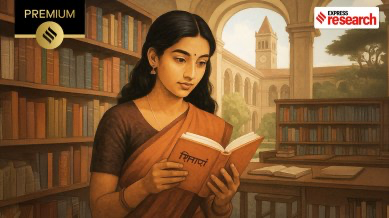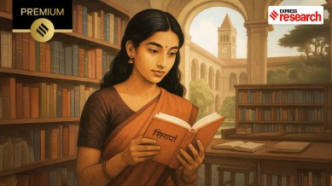The integration of Indian language ( Sanskrit to Hindi ) studies into American universities has evolved over the past century, reflecting a growing recognition of India’s linguistic and cultural richness. This journey has been shaped by academic pioneers, shifting geopolitical landscapes, and an increasing appreciation for India’s global significance.

Early Academic Initiatives
In the late 19th and early 20th centuries, American scholars began to explore Indian languages, primarily focusing on classical languages like Sanskrit. For instance, the University of Pennsylvania offered Sanskrit courses as early as the 1880s, establishing itself as one of the first American institutions to do so. Morton W. Easton, a professor at the university, played a pivotal role in this endeavor. His successor, W. Norman Brown, further expanded the program by founding the Department of South Asia Regional Studies in 1948, the first area studies department of its kind in North America.
Post-War Expansion and Diversification
The mid-20th century witnessed a broader inclusion of modern Indian languages in American academia. Scholars like Ernest Bender at the University of Pennsylvania were instrumental in developing teaching methods for languages such as Hindi and Urdu. Bender’s work during and after World War II, including authoring grammars for these languages, laid the foundation for structured language programs.
During this period, the U.S. government’s interest in South Asia, driven by geopolitical considerations, led to increased funding and support for South Asian studies. This support facilitated the establishment of comprehensive programs that encompassed language instruction alongside cultural, historical, and political studies.
Contemporary Landscape
Today, numerous American universities offer courses in Indian languages, reflecting the sustained interest and recognition of their importance. Institutions like Harvard University provide instruction in Hindi-Urdu, Sanskrit, Tamil, and Classical Tibetan. Similarly, the University of Chicago’s Department of South Asian Languages and Civilizations offers undergraduate majors with a focus on these languages.
The motivations for students to pursue Indian language studies are diverse. Some are drawn by the rich literary traditions, while others seek better opportunities to engage with India’s dynamic socio-economic landscape. The integration of these languages into university curricula underscores a commitment to fostering cross-cultural understanding and preparing students for global engagement.
Challenges and Opportunities Sanskrit to Hindi
Despite the progress, challenges persist. The absence of standardized curricula and a shortage of trained instructors with formal pedagogical backgrounds have been noted as areas needing attention. Rakesh Ranjan, director of the Hindi-Urdu Program at Columbia University, highlighted that many instructors are native speakers without formal training in language education.
However, initiatives like the American Institute of Indian Studies (AIIS) are addressing these challenges by offering immersive language programs in India, providing students with authentic linguistic and cultural experiences.
Conclusion
The embrace of Indian languages by American universities reflects a broader recognition of the importance of linguistic diversity in fostering global understanding. While challenges remain, the continued dedication to expanding and refining these programs promises to deepen the cultural and intellectual ties between the United States and India.
















